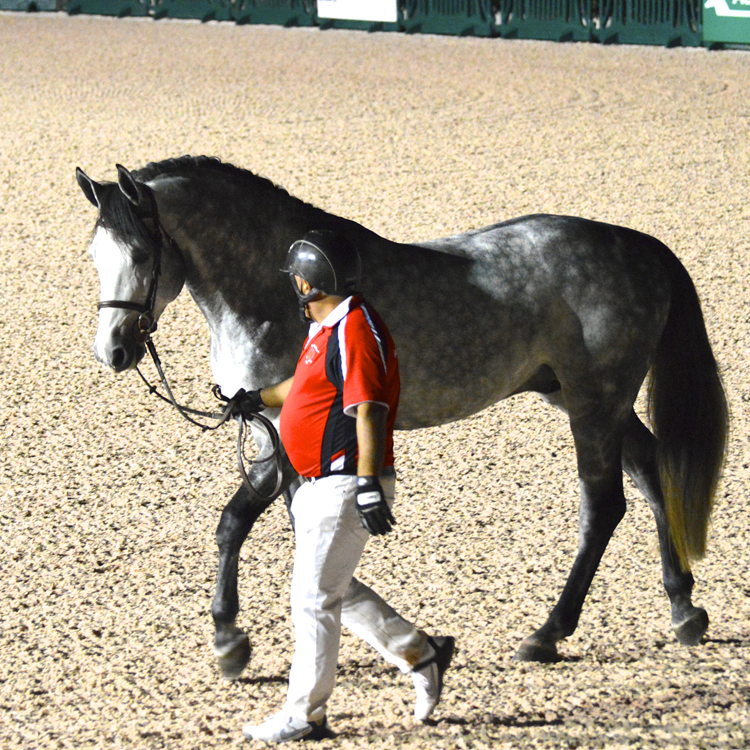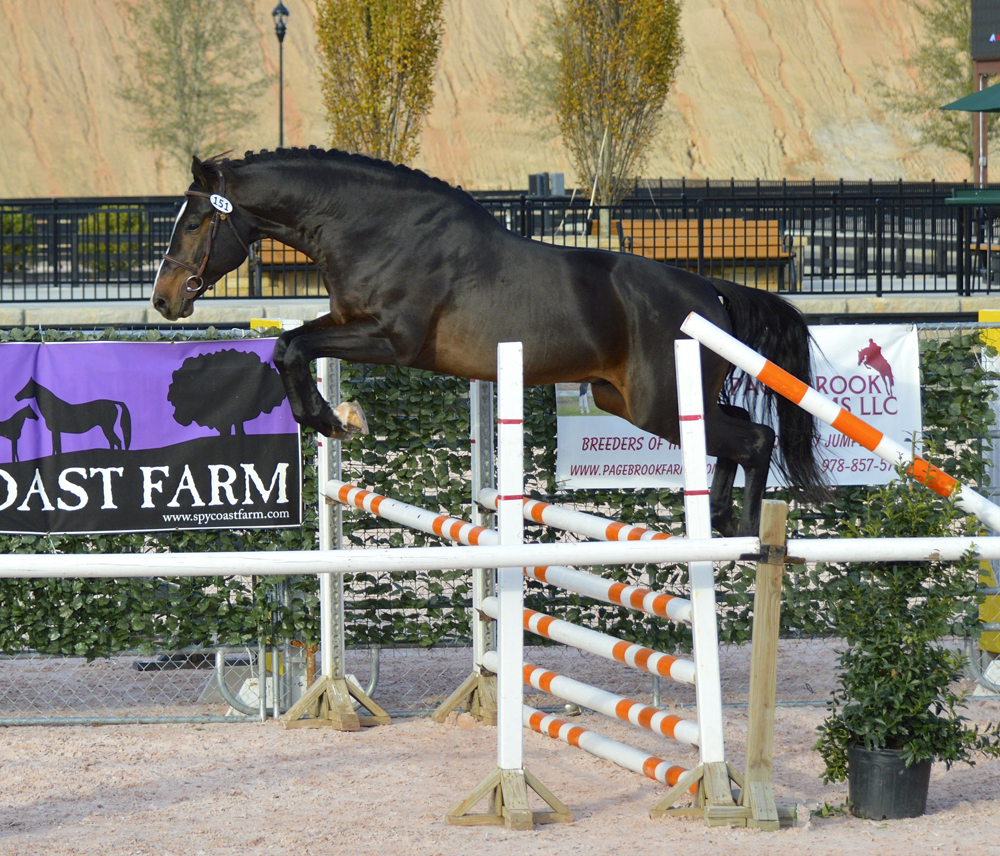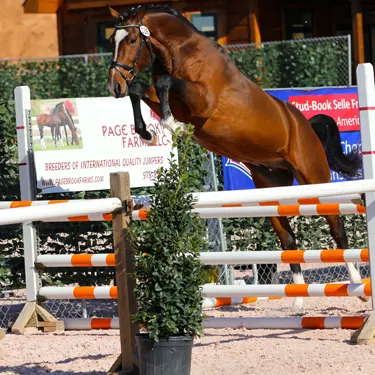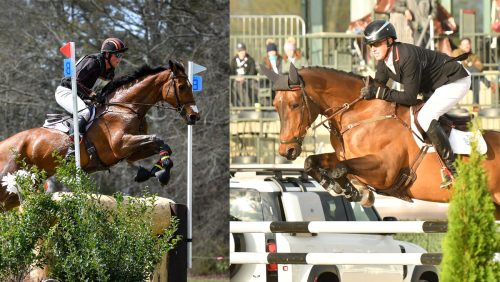In the Dec. 1 & 8 issue of The Chronicle of the Horse, the annual stallion issue, Between Rounds columnist Natalie diBernardinis writes about how U.S. breeders can connect with top U.S. riders, getting their young horses into the programs that produce success.
One piece of the answer could be the ever-evolving Young Horse Show program.
The Young Horse Show Finals has seemingly found a home at the Tryon International Equestrian Center. Since the start of this series, designed for horses aged 1 to 5 years old, the finals have been hosted at several different locations. It has been a challenge to find a central location for these finals due to the geographical variety of its attendees.
Tryon in early November seemed to be a great location for the finals; it is centrally located—in Mill Spring, N.C.—and is a beautiful, horse friendly facility; mats in the aisles and stalls, hooks for buckets in the stalls, locked tack rooms, and much more. I believe as the young horse program continues to mature, there will end up being a final on each coast to give breeders all over the country the opportunity to participate.
This is a wonderful program that Spy Coast Farm has generously backed. They recognize there is a systemic disconnect between U.S. breeders and riders. The quality, and quantity, of young horses being bred on American soil is disproportionate to that of U.S.-bred championship horses in our show rings.
The other difficulty we face here in the States is how expensive it is to campaign or show a young horse on the usual horse show circuit. As such, many nice young horses do not reach their full potential.
 |
 |
Aliboo Farm’s Carrasca Z (bred by Hyperion Stud LLC) took wins in the 4- & 5-year-old in-hand/at liberty and the 4-year-old jump chute classes and second place in the 4-year-old jumping under saddle.
Photo by Hallie Kitay
The horses that competed in these finals had to qualify in their respective classes at one of the qualifiers at Young Horse Shows series events throughout the year. A young horse could qualify by earning a score of 7 or higher in the jumping and under saddle class (double clears automatically earn a qualification), a 60 percent or higher in the dressage, and a 7.5 for the other classes.
ADVERTISEMENT
Equestrians often ask, “What is the Young Horse Show series, and what do they do there?” The YHS series has five different “divisions” of classes. In-hand/at liberty classes are for horses aged 1 to 4 and judge the horse’s conformation as well as their quality of gaits. Horses aged 2 to 4 are eligible to compete in the free jumping chute where they are jumped at appropriate heights for their age, and the judges are educated on showing the horse to its best potential (using rails to help its form if necessary).

Aliboo Farm’s K Diamant d’Heure ABF earned the High Score American-bred prize at the YHS Finals.
Photo by Hallie Kitay
The sport horse under saddle classes are for horses aged 3 to 5 and are judged on rideability, the horses’ gaits, and how balanced and powerful they are—the judging criteria is very different than a hunter flat class. Horses aged 4 and 5 years old can compete in the jumping under saddle classes; they have to jump two courses over age-appropriate tracks and heights.
Lastly, there is a dressage division for horses aged 3 to 5 years of age; again these are not judged like a USDF competition but rather on the horse’s potential for the sport.
The judges at these YHS horse shows understand that these horses are green and young; they are very good at looking past the “greenness” and seeing what the horse’s potential is. Just because a horse has a rail down or bucks in a class they will not immediately lose the class—instead the judge wants to see the horse’s reaction.

Young Horse Show series judges overlook the occasional “baby” moments.
ADVERTISEMENT
Two judges worked together in judging the finals in an effort to have consistent, top-notch scoring. Both judges wrote their comments on the score sheets so breeders are able to understand the evaluation process. Christian Schacht of Germany came over to judge alongside Jos Sevriens. Jos is originally of the Netherlands and is now living in Newnan, Ga.; he has been an integral member of the YHS team since its inception.
There are many other members of this team who make this series possible, and it could not happen without the volunteers who offer their time at the shows. Phil Silva and Klaus Schengber have been the official handlers of the YHS shows since the beginning; the YHS series has these official handlers for the horses in the ring as a safety measure. They are very experienced handlers who give the horses a good and safe experience in the ring. At the finals more handlers were brought in to assist with the high number of horses. Included in this were Quinnten Alston and Jordan Bali working in the jump chute to round out a great team.
JeanYves Tola of Lexington, Ky., is a key member of the founding team and has helped shape this program into what it is today. JeanYves and his wife are breeders who own Jump Start Farm. As he explains, “A few years after we started breeding, we realized very quickly that some things [not to say a lot] were not quite right here. Why was it that no American-bred horses were ever at the top? Why was it that European imports were so much better at the shows than ours? Financially as well, if you did not have deep pockets, you had no chance of survival as a breeder. It did not take me long to figure it out: we simply had no development system for the young horses here—no quality control, show experience, performance assessment and last but not least, no market. So I researched the European market—mostly France and Germany—and it did not take long to figure it out. We needed our own developmental program.”
The finals weekend is about more than just competing and showing; it is a fun weekend for breeders, riders, and owners to connect with each other and talk about the sport for young horses. The camaraderie between everyone during these shows is truly one of the nicest aspects of the weekend; too often at competitive shows there is a stressful, anxious environment, but not at Tryon.
In this vein, on the Friday evening before the Finals, AliBoo Farm hosted an exhibitor party during the stallion show. There was something for everyone, and no one went home hungry. Beautiful, majestic stallions were showcased in the ring with both young and older stallions presented to the crowd accompanied by music and lights. Each of these stallions was beautifully turned out and behaved admirably.
It was a great experience for these youngsters embarking on their career, and it was a terrific opportunity for the spectators to get to know them early in their career. For many, this was a favorite event of the weekend! Another unique and special aspect of this weekend was the wonderful outpouring of support from the community. A local brewery and vineyard jumped in to donate the alcohol for this event. Individuals from the local hunt also volunteered in strong numbers during the weekend, offering their services for scribing, announcing, and running the gate.
You can find results from the 2014 Young Horse Show Finals here. Check in at www.chronofhorse.com tomorrow for a report with fantastic photos of some of the top-performing young horses from the Young Horse Show Finals!
Chronicle blogger Taylor Flury rides out of her family’s AliBoo Farm in Minooka, Ill., and competes primarily in the jumpers. She also runs AliBoo’s breeding program. Flury’s top mount is the U.S.-bred Role Model (Roc USA—Darling Devil), who claimed U.S. Equestrian Federation Horse of the Year titles in 2011 and 2012 in the 5- and 6-Year-Old Jumper divisions.















